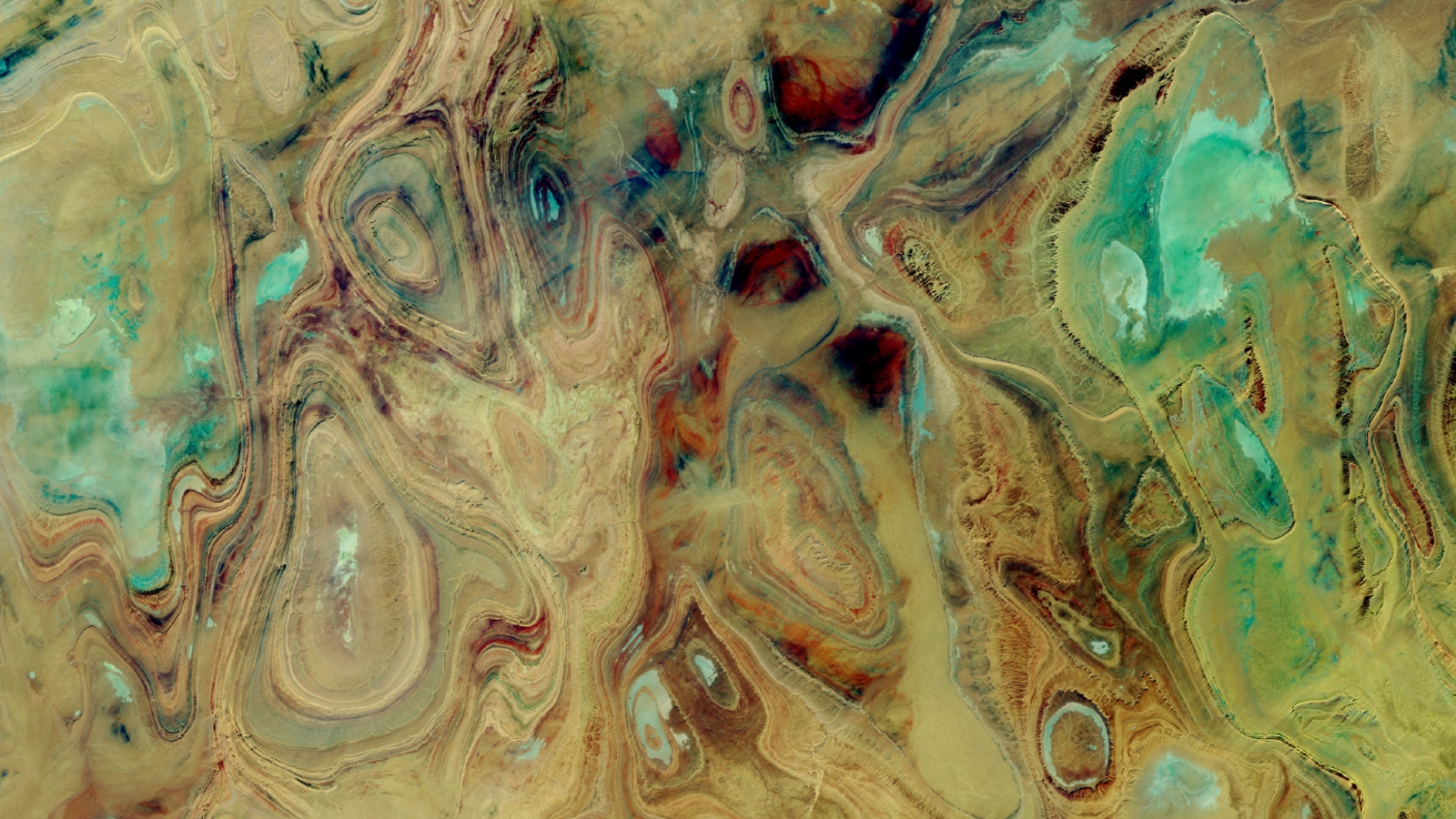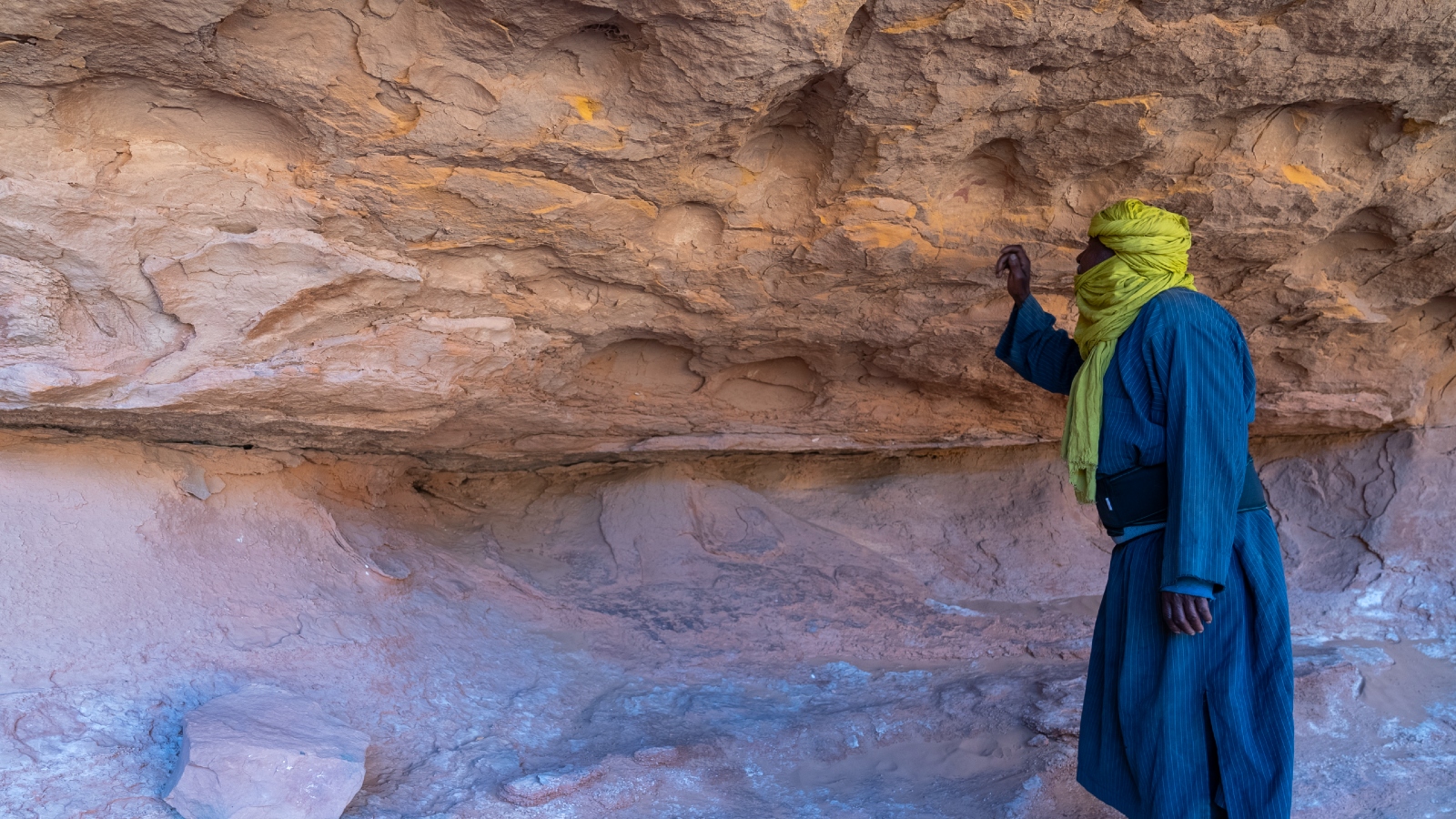
Where is it? Tanezrouft Basin, the Sahara . [26.2089113, 2.27090884].
What's in the photo? Exposed paleozoic rock folds and colorful salt pans.
Which satellite took the photo? Landsat 8.
When was it taken? Oct. 22, 2017.
This 2017 satellite photo shows the abstract beauty of one of the world's most terrifyingly hostile environments.
The Tanezrouft Basin is a large region of the Sahara mainly located in southern Algeria and northern Mali. The area receives less than 0.2 inches (5 millimeters) of rain a year on average, making it "hyperarid." Temperatures can reach over 122 degrees Fahrenheit (50 degrees Celsius) during summer, according to NASA's Earth Observatory.
The basin is almost completely devoid of life apart from some Tuareg nomads who occasionally make the treacherous journey through the region on a caravan route that dates back more than 1,500 years. But this can be a deadly trip due to the region's lack of visible landmarks, which can cause even the most experienced travelers to get lost. As a result, the basin is colloquially known as the "Land of Terror."
Thousands of years of sandstorms have eroded sediment and sand from parts of the basin, which has revealed ancient concentric folds in the region's undulating sandstone bedrock that date to the Paleozoic era (541 million to 252 million years ago). Flashes of green are pitted around these folded rocks, which are salt flats often located in steep canyons.
When viewed from space, "the exposed geologic features create an arresting work of abstract art," NASA representatives wrote.
Related: 12 amazing images of Earth from space

The dramatic landscape also reveals that Tanezrouft Basin hasn't always been so hostile to life.
Some of the salt flats in this real-color image lay in canyons up to 1,600 feet (490 meters) deep. The scale of these steep gullies and the shape of their smoothed sides are signs that they were carved out by flowing water, potentially from intermittent flooding over millions of years, P. Kyle House, a researcher with the U.S. Geological Survey, told NASA's Earth Observatory.
This suggests the region could have once been a more luscious environment potentially capable of supporting a diverse ecosystem.
Today, the salt flats and their canyons either lie within or intersect with the exposed sandstone folds, creating the shapes seen in this image. "These patterns are striking and reminiscent of landscapes formed on folded strata in, for example, the Red Desert of southern Wyoming and even parts of the heavily forested Appalachian Mountains of the Eastern United States," House said.







